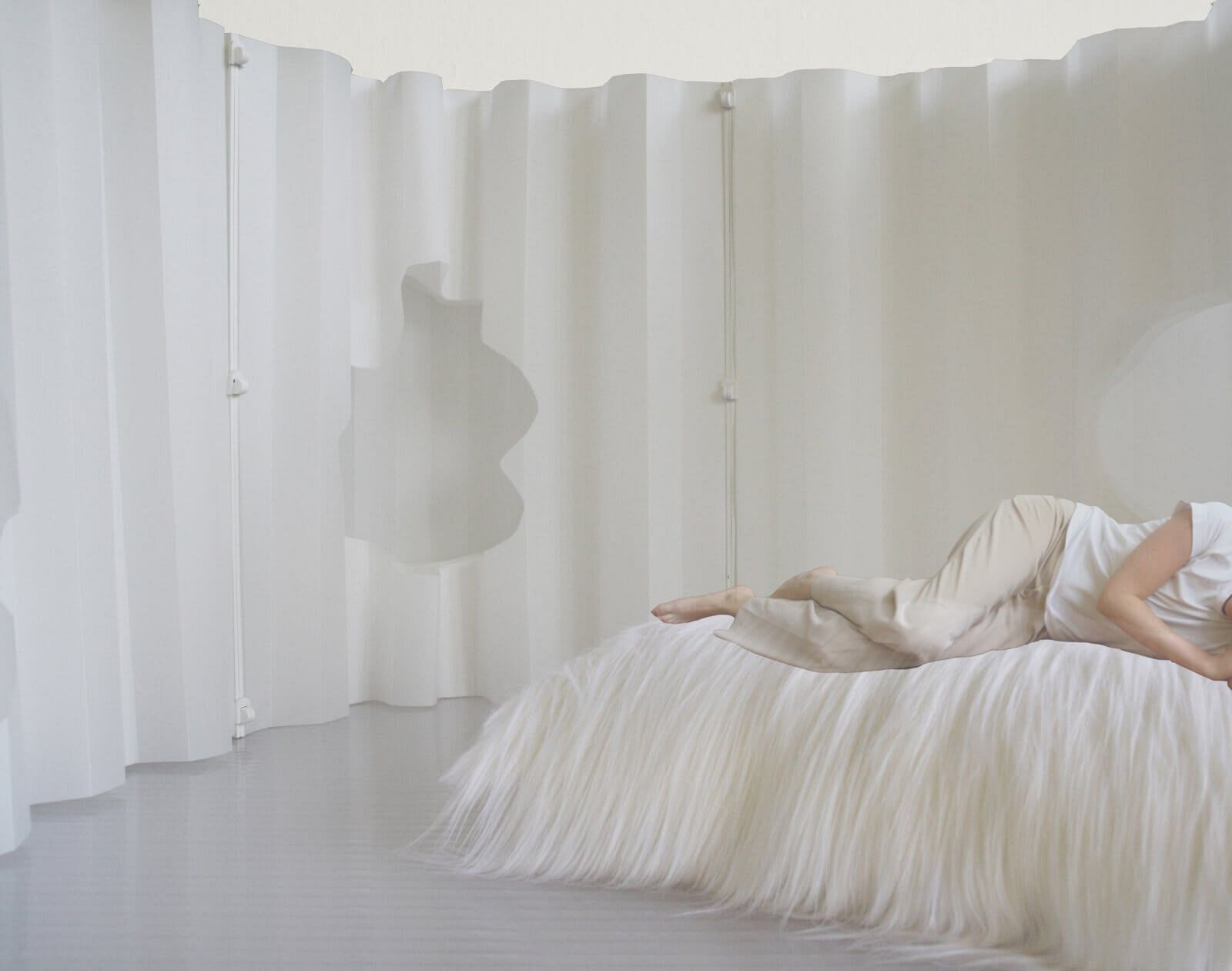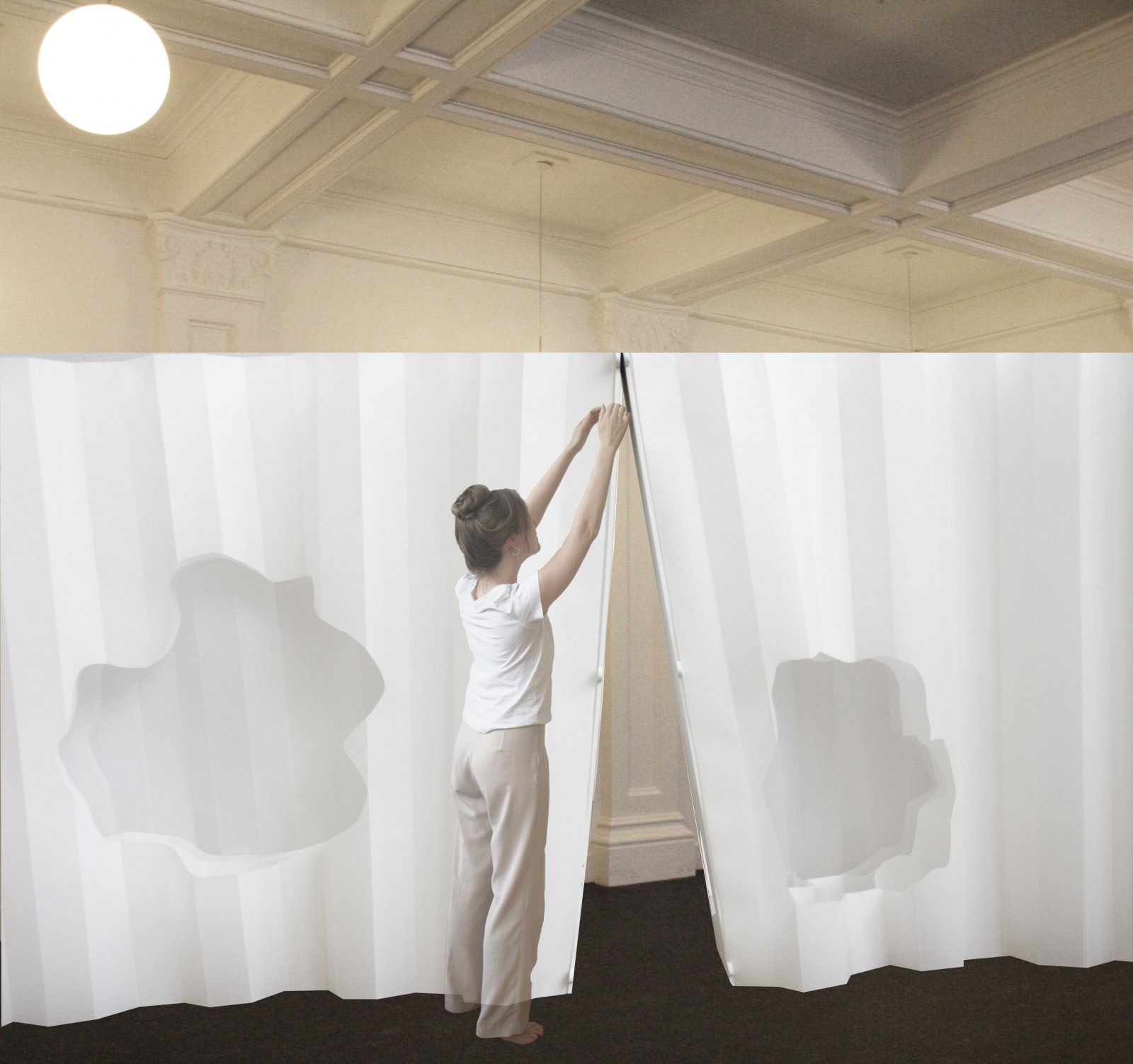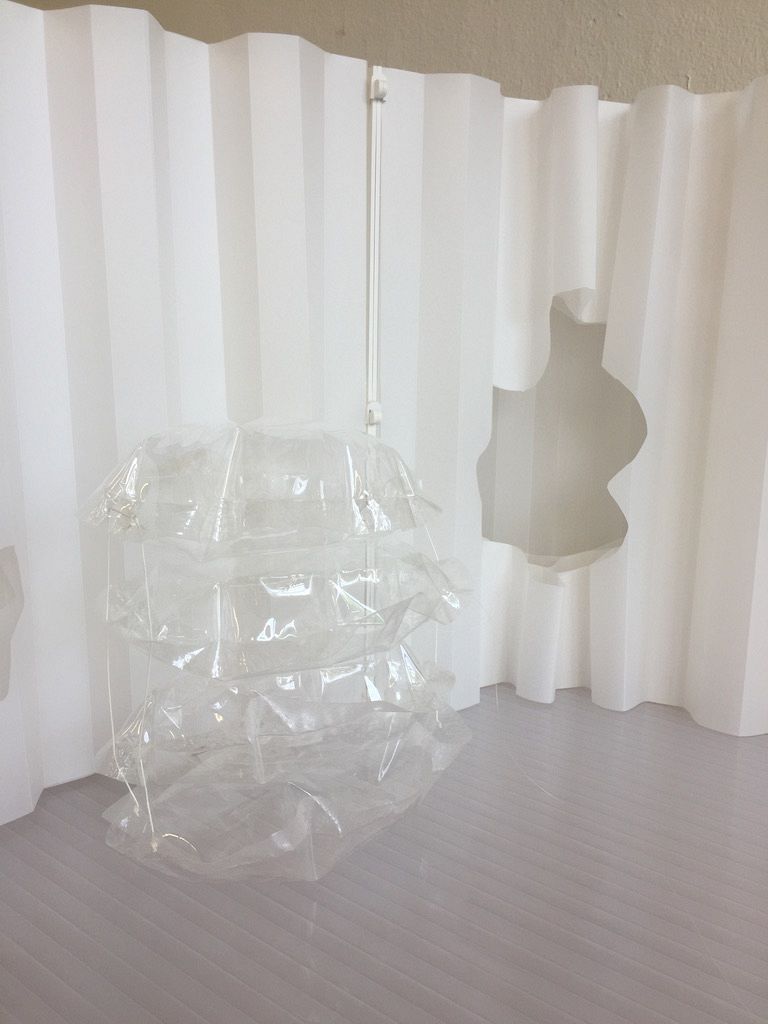
Lisa Hens
Internship: Müller Van Tol
lisahens94@gmail.com
www.theroomofonesown.com/
www.instagram.com/lisaeva_h/
As a designer, I am focused on how people relate to their domestic spaces and the interaction that takes place here. The house fascinates me because of the intimate, the personal, the limited and unlimited in which we live. Designing a domestic environment can be compared with writing a spatial script for the dweller. It’s a place where we can perform our contemporary life, where we give meaning to our identity. My purpose is to look close to these contemporary lives and create suitable and challenging environments around them.
It’s important for me to touch a current subject in society and seek for abstract suggestions and conversations. This will be translated into a spatial experience that can influence the perspective of the subject. Motion is often a topic in my process; motion brings further, changes the position, posture or emotion, for people, spaces and objects. In this way, I create an abstract concept but with an ability to translate it in a more practical way; finding a balance between fantasy and reality. The membrane of the ‘Room of One’s Own’ can be seen as an abstract domestic environment, or can be used for more practical space dividers in private and public arenas.
GRADUATION PROJECT
The notion of the room explores architecture that both gives cues for how we are to behave and offers itself as a prop for inhabitants to form and perform their identities.
The room is not a passive receptacle in which furniture and objects are adapted. The room itself is an object. Its charged with energy; it shrinks and expands. And these gestures mould forms. It’s the configuration that gives birth to forms. It’s the interaction that conditions the network between the membrane and cells Motion is the main director of the room.
If architecture is about making space, the room seems the most evident form that has always been there; it semantically correlates with the act of making room for oneself. The Room of One’s Own concerns the urgency of a changing environment; a temporary refuge that is performed by a membrane and cells. The membrane replaces the confined environment we are living in; it operates through flexible and freestanding components that can be bond together. Within this construction, there are cells stored; they perform as inflatable and foldable furniture. One can inflate and deflate, the refuge acts as a living creature.
Living in confined space creates an intense pressure on individual behaviour; one needs to adapt to an environment characterised by restricted sensory stimulation which usually gives us a fixation in time and place. There are periods we need modification; one can adapt the environment to its wants and needs. A flexible and temporary room where one must physically and mentally participate; one is challenged to find its own comfort.
In architecture, walls allow to structure a specific place or function; it creates a sense of place. One’s room is an extension of the body; walls function like a skin that protects the inside from the outside. In biology, cells are surrounded by a membrane to keep the molecules that cells need together and separate them from the outside world. This surprisingly flexible structure maintains proteins with different functions; some of these play a role in the distinction between the body's own and the foreign. This analogy suggests a deeper understanding of the rooms we create and experience to feel protected.
The phenomenological aspects of the room reveal a theatre of seclusion and concentration in a broader framework. Within this framework the room becomes a neutral space without hierarchy; one can assemble the membrane and inflate a degree of air in the cells. The spatial dialogue between time, activity, and the room is a reaction to our contemporary and social status. The room must be a place for expression; for ongoing progress.





THESIS
Dwelling in Motion: the evolving boundaries of domestic programs
Research question: How are boundaries of domestic programs evolved over the past century and how are these programs performed in contemporary life?
The house is no longer this fixed space for everyday life; these contemporary spaces are manifested by constant transitions and configurations that expand and decrease. Modular walls, moveable shelters and furnished units expand or contract, based on our needs. It’s impossible to design domestic environments that suit everyone since each individual has different needs; the composition of privacy and communal depends on the lifestyle that people have. However, the evolution of domestic programs and their boundaries show that in every epoch and every place, the form of inhabitation reflects the social, cultural and economic status. The definition of the program is questioned, it’s a new state of being. A flexible approach to our domestic environment is necessary for several reasons: scarce space in cities, changing scale of households a lifestyle issues that envisage a more fulfilling personal life. Within these changes, the importance of retreat remains; a room of one’s own.
The domestic programs, what we commonly known as the home, became a complex notion that converts the inflexions of history. With designing a house, you serve a scenario to the resident. Many architects and designers in history have manifested new ways of living, always with an innovative perspective to our contemporary life; with their fantasies about how our daily life should be performed. Nowadays, architects are more focused on developing domestic environments around our lifestyles since we have to be aware of scarce space. The need for independence has become very important in the last century. Domestic environments are easier to adapt according to our desires, just as the modern dweller can easily adapt; this creates a spatial dialogue in the domestic scenario. Domestic boundaries are less strict and more flexible, so hierarchy is becoming a thing of the past.